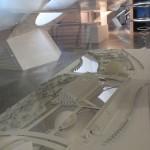I’m now in Cartagena for 6 weeks and slowly I’m getting to know the city, the organization and the people here. The last few week are getting busier and busier and I am getting the basic idea of how will the work in summer look like.
During these weeks I’ve been embarking on several missions. In the port I’ve been helping Viktor to repair and renew his love – Annamarie. I was filling the cracks in the wood with the putty (masilla) around the boat and Viktor was polishing the old paint of, so the boat can be fixed with the new protective coating. After the working sessions we usually went out for a beer. On one of these occasions I met mister Agustin that is currently in Cartagena, but lives in Lanzarote, Canary islands. He expressed a wish to have a volunteer also in his organization. Before I got this EVS confirmed, I was planning to go to Canaries with the help of a website that connects volunteers and organizations that need them – workaway.org. So I was happy to send him a link to the page. Through it he’ll hopefully find some people that might be able to help him. If not I just might go there for a month or so after my work here is done.We also started the work in the library in the social center of Santa Lucia. Our first task were to start cataloging the donated books to the database so we’ll later be able to lend them out to people. We also started with the scheduled opening hours for the library. The library will be opened every weekday except Monday day after 4pm.
We also had two courses. The first one was held by Gines and the topic was graphical design and the tools for it. We learned about Indesign and Photoshop, about some basic design ideas and other thinks one should be careful about when designing a poster or a similar material. The other course was about sailing and lateen sail boats. I’ve already written about this course, so I won’t go into details here. Even though both courses were in Spanish, I managed to pick up some new information and I’m happy that I participated on them.In the last weekend I did my first escape from Cartagena. I aimed for Valencia, where I wanted to check out the festival Las Fallas. Valencia is a nice city and I’m happy that I saw the hassle of the festival like Fallas. However I might want to go back there when the cruds of crazy people go somewhere else.The day after I came back, we went for a sailing trip with schooner type boat (golleta). The wind was low and the sea was just a bit wavy, but it was smooth sail. Unfortunatly we weren’t able to turn the engine of, because it can be moody and not start again. We didn’t want to stay out of the port, so we didn’t risk it. I hear that there will be plenty of more opportunities to sail in silence.
















































